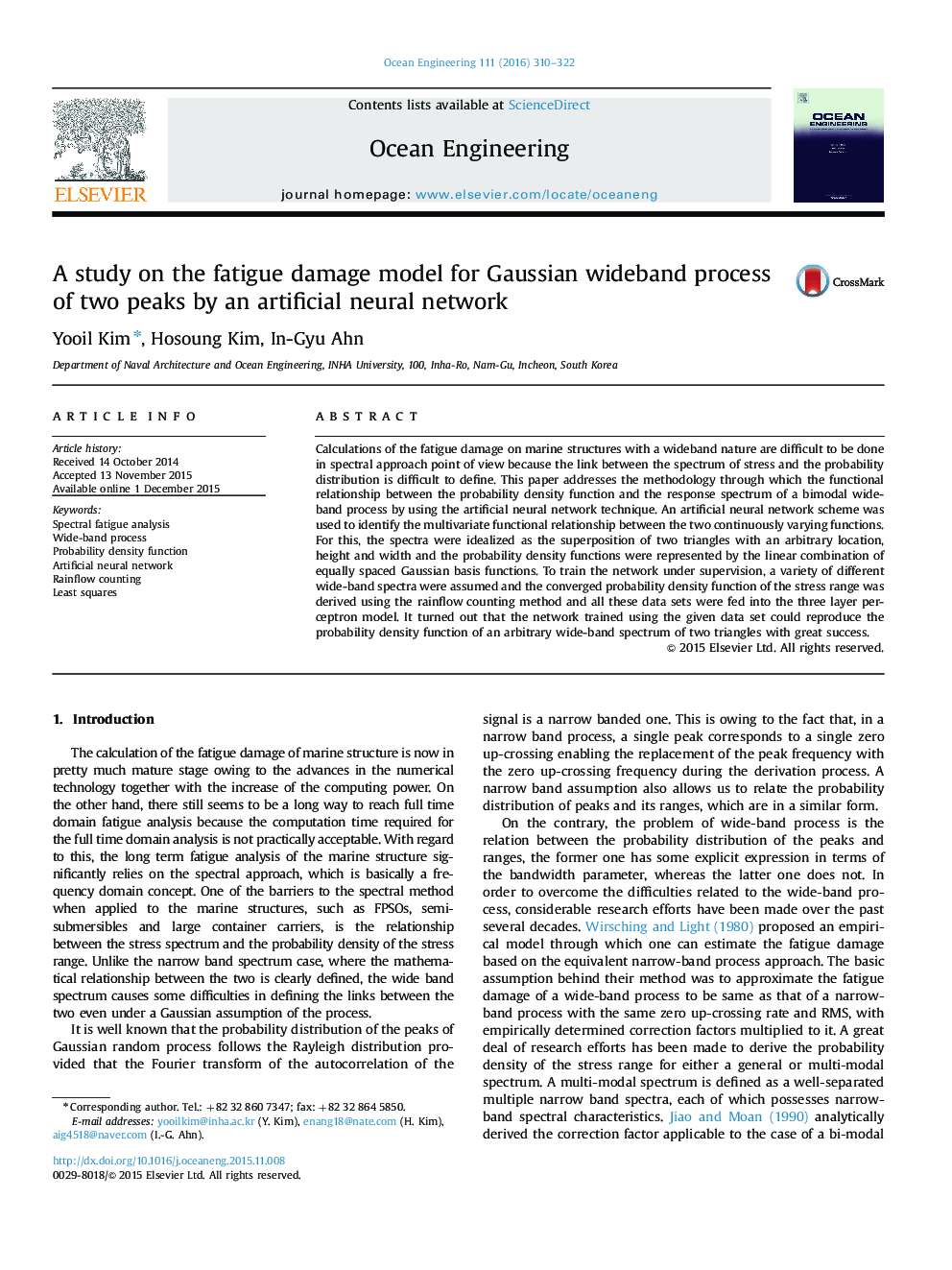| Article ID | Journal | Published Year | Pages | File Type |
|---|---|---|---|---|
| 8065127 | Ocean Engineering | 2016 | 13 Pages |
Abstract
Calculations of the fatigue damage on marine structures with a wideband nature are difficult to be done in spectral approach point of view because the link between the spectrum of stress and the probability distribution is difficult to define. This paper addresses the methodology through which the functional relationship between the probability density function and the response spectrum of a bimodal wide-band process by using the artificial neural network technique. An artificial neural network scheme was used to identify the multivariate functional relationship between the two continuously varying functions. For this, the spectra were idealized as the superposition of two triangles with an arbitrary location, height and width and the probability density functions were represented by the linear combination of equally spaced Gaussian basis functions. To train the network under supervision, a variety of different wide-band spectra were assumed and the converged probability density function of the stress range was derived using the rainflow counting method and all these data sets were fed into the three layer perceptron model. It turned out that the network trained using the given data set could reproduce the probability density function of an arbitrary wide-band spectrum of two triangles with great success.
Keywords
Related Topics
Physical Sciences and Engineering
Engineering
Ocean Engineering
Authors
Yooil Kim, Hosoung Kim, In-Gyu Ahn,
